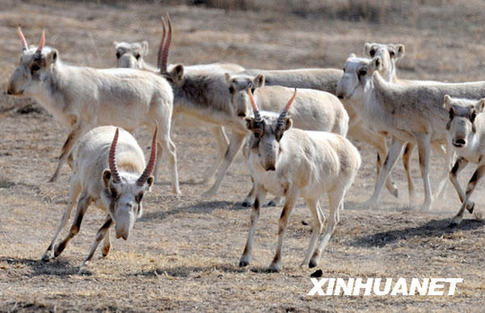The Gansu Endangered Animals Research Center have bred 24 Saiga antelope this year, the greatest population increase since the species was reintroduced and artificially domesticated in China, said Zhao Chongxue, a researcher at the center.
 |
|
Saiga antelope at the Gansu Endangered Animals Research Center run in the enclosed field designed exclusively for them.
|
The Gansu Endangered Animals Research Center, located in Wuwei City on the southern edge of the Tengger Desert, was founded in 1987. Breeding various endangered animals such as wild camels and Przewalski's horses, it is China's only habitat for Saiga antelope populations.
"These young antelopes are growing well, with a 100 percent survival rate, in an open field specially constructed for them where they can run freely," said Zhao.
The Saiga antelope, also known as the high-nose antelope in Chinese, is largely found east of the Caspian Sea, in Kazakhstan, Kyrgyzstan and Tajikistan. Because of its decreasing number, it has been listed among the endangered species in the Convention on International Trade in Endangered Species of Wild Fauna and Flora.
As a Class I state-protected species in China, the Saiga antelope was once found in the Junggar Basin and Beita Mountain in Xinjiang, the Mazongshan area in Gansu Province and the China-Mongolia border area in the 1950s. But it has not been seen in the wild in a long time.
The Gansu Endangered Animals Research Center has acquired more than 10 Saiga antelope from abroad since 1988. It now has 65 Saiga antelope after more than 20 years of breeding.
"The introduction and artificial domestication aim to restore this species in China," said Wang Li, deputy director of the research center. "However, more individuals have to be introduced because its population is rather small now."